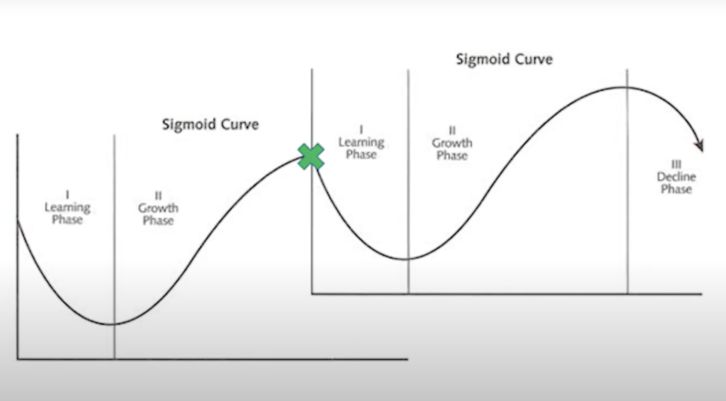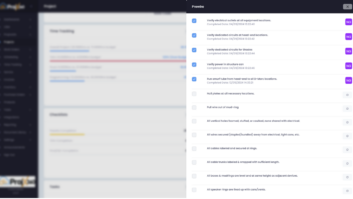The recent HTSA Spring Summit was the buying group’s second virtual summit, and it looks to be, as several people put it throughout the day, hopefully the last one. With vaccinations flowing into arms at a steady pace, HTSA is looking to have their Fall Summit in person in Dallas on October 12–14.
But before then there is still plenty to do, and the virtual event was packed with vendor meetings to introduce new products and business sessions that all pointed to the theme of the Spring Summit, which was “Stay Ahead of the Curve.”
As he usually does, Jon Robbins, executive director for the HTSA, kicked off the day with his “State of the HTSA” presentation. In it, he painted a very positive picture based on data the group collected from both integrator and vendor members. And, as good as last year was for the industry, Robbins foresees a very good year ahead of us, too.

“The HTSA is bullish on 2021,” he said. “Even though interest rates are beginning to creep up, real estate is hot as a pistol, people are doing work in new and existing homes, and consumers have a new appreciation of the need for quality technology in their homes. We think any of those positives will offset the negatives, and business will continue to be good in 2021.”
He also disclosed the result of a query to members about their forecasts for the next four months, and the average response was expectations that business would be up between 13 and 15 percent from April through July over a previous year that was very good for members. Additionally, Robbins revealed that combined group purchases from vendors are up 22 percent in January/February on a combined YTD basis.
On the technology front, in the ahead of the curve theme, Tom Doherty, director of new technology initiatives, summarized the group’s success in incorporating lighting over the past four years, and explained the rationale for bringing on the group’s latest vendor member.
“Customers want things easy,” he said. “Easy to use, easy to do business with — do it all for me. This is why we can add new categories; once it was music throughout the home, and now automation, lighting, security, and wellness. One company to do it all, and not having a golf simulator resulted in having clients going to another company. We now have a golf simulator partner — aboutGolf — which has already been brought on to projects. We will continue to work to keep HTSA members ahead of the curve.”
From Vines to Curves
To stay ahead, sometimes you have to look back, which is what Keith Esterly, chief learning architect for HTSA, did when he referenced his vines presentation from the Fall Summit during his “Ahead of the Curve” Spring Keynote presentation. So how does one connect the vines and the curves?
The vines represent your business — the one you are currently swinging on, and one in front of you that represents where you need to go to achieve your ideal business. The curve is very similar, with the Sigmoid Curve being used to describe the lifecycle of the products and services we provide. The Sigmoid Curve is similar to a sine wave, with an initial dip (the Learning Phase), then a rise (the Growth Phase), followed by another dip (the Decline Phase).

Staying ahead of the curve, as Esterly explained, would be to start a second Sigmoid Curve while the company is in Growth Phase, which makes the Decline Phase less impactful, as there is another Growth Phase on the horizon.
“What if we didn’t wait for the decline to grab the new vine?” asked Esterly. “You can get rid of decline by switching to a new vine. How do you know when to start? You can never be sure — it is always an educated guess and always a risk. The key is to stay alert and remain nimble. Plus, as you get good at changing, the Learning Phase will get shorter and more shallow.”
What are some of the curves to stay ahead of? How you recruit talent and staying ahead of cybersecurity were two of the topics Esterly mentioned that, not coincidentally, matched some of the agenda items for the Summit.
The Hiring Curve
One of the first curves tackled in the day was how to find the right talent. The topic was covered in a session named “Talent Recruiting Strategies in CI Space,” and featured a panel that included Greg Simmons, VP industry partnerships, SnapAV; Tres Huber, CEO, HD Staffing; and Venessa Vasilakeris, director of training and customer success, McQuaig. It was moderated by Esterly.
The session began with Esterly explaining that having a fully equipped staff starts with having a big-picture, strategic approach to hiring as opposed to a target-shooting, reactive approach.
Huber agreed, adding, “Understand the planning process. You have a revenue number per employee — the numbers tell you how many employees you should have. Take a deeper dive into your business cycle and hire before your big push. Work in two to three months in reverse to find the right employees.”
With the “when” to hire covered, the group moved on to “who” to hire, with Simmons recommending to look for a right fit in attitude above all else. “If you hire people with good attitudes, they are the best to invest in training,” he said. “The better the attitude, the better the result.”
“Recruitment is 90 percent science and 10 percent art,” added Vasilakeris. “Assessment helps us predict success on the job. In interviews we access their mannerisms, skills, and abilities, but a lot of interviewers do a poor job of noticing things more predictive of success — attitude and motivation. McQuaig offers personality and intelligence assessments, and those drive long-term success.”
Esterly was quick to add that those services from McQuaig are available to HTSA members at no charge.
Simmons recommended hiring from within to fill higher-up positions, as it is easier to backfill, plus promoting one of your own does wonders for the company culture. “If a company promotes from within,” he said, “it provides a longer career path.”
Several suggestions were made for finding new recruits, including developing relationships with local high schools, although that takes a good deal of time to maintain.
As far as job boards go, Huber had some suggestions. “The boards are only as good as how you use them. Zip Recruiter for the trade, Indeed for higher-level jobs. Make sure the job post is enticing and list what the job pays.”
He also said to make sure you include the listings on an updated careers page on your own website.
The Cybersecurity Curve
I’m not going to lie: the next session was pretty terrifying. “Update on Cyber Threats” was broken into two parts, each hosted by Doherty. In the first part, Brian Thornton, CEO of ProWriters, which is a company that streamlines the insurance comparison and buying process to make it easier for clients to get the exact coverage that is needed, described the benefits that cybersecurity insurance can offer.
And in his descriptions of the possible liabilities stemming from cybercrimes, coverage certainly seems necessary. When asked what is covered, Thornton replied, “Insurance covers monitoring, communication to clients, call centers, breach response, and ransomware costs. You can have business interruption coverage if you can’t function while the investigation goes on.” You can also get coverage to protect you from being sued by a third party.
With talks of ransomware, ID theft, and more, Doherty asked what dealers could do minimize their risk. Some of the suggestions offered by Thornton included multi-factor authentication, having a third-party, off-site cloud backup, and making sure you have a secure email gateway that will filter known bad IP addresses and quarantine emails. Employee training is also crucial, he added.
For the second half of the session, Doherty welcomed Rick Meder of Sonic Wall, a cybersecurity product and service provider that also keeps tracks of the latest trends and tactics being used against companies.
“At Sonic Wall, we identify new threats and make protection models,” he said. “We watch the trends — this year, malware was down over 43 percent. Targeted attacks are on the rise, with ransomware attacks jumping by over 62 percent YoY. In the beginning of 2020, we had one ransomware attack per day, and by September there were eight attacks per second.”
He said that some of the data for last year was skewed because of the shift to work-from-home, which also led to an increase in ransomware attacks on residential systems. “With ransomware, they typicaly didn’t care about home systems,” said Meder. “Because of Covid and the shift to work-from-home, it has changed the landscape. Now the home network may have valuable corporate access, and most of them are only protected by consumer-grade products.”
So what can an integrator do about it? “Move away from consumer- to enterprise-grade networking,” Meder offered. “Protect the perimeter, but also let people in — set up your point of entry and secure it. People ignore cloud servers — protect that vector as well. Install intelligent phishing protection. The tech is there, but you have to implement it.”
Beyond Virtual
Other topics — or “curves” to keep with the theme — covered through the Summit included Building the Brand and HR Issues in the New Remote World, in addition to many vendor presentations from companies such as Sonance, Crestron, SnapAV, Harman, and Sony. For HTSA members, the “State of the HTSA,” “Ahead of the Curve” keynote, and “New Technology Initiatives” sessions remain available on demand.
The next gathering for members is due to be in-person at the Renaissance Dallas on October 12-14.
For more information, visit HTSA.com.







